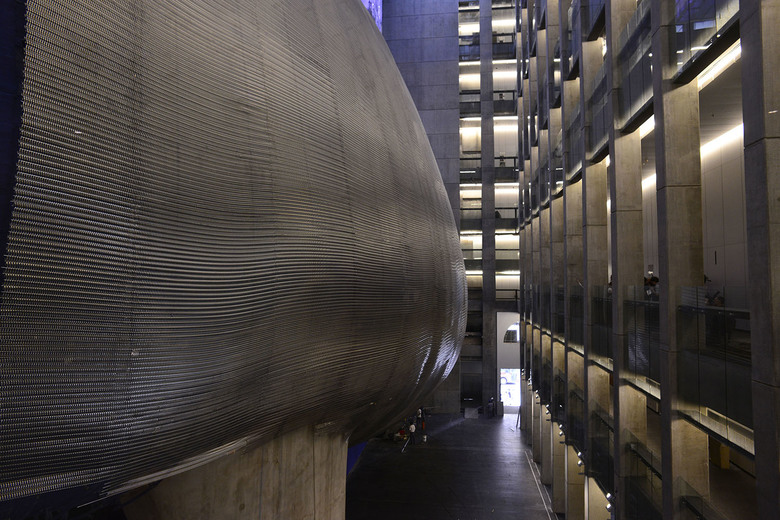Covering 'The Blue Whale'
John Hill
24. agosto 2015
Photo: © GKD/Pepe Mateos
Buenos Aires's new Centro Cultural Kirchner is commonly known as Ballena Azul (Blue Whale) due to its whale-like concert hall designed by B4FS Arquitectos that is covered in metallic fabric from GKD.
The project is the conversion of the former Post and telegraph Palace, designed by French architect Norbert Maillart built in 1928 on the Parque del Bicentenario in downtown Buenos Aires. B4FS (Barea Bares Bares Becker Ferrari Schnack) won an international competition for the restoration of the listed building and its transformation into one of the largest cultural centers in the world. The Centro Cultural Kirchner, named for Argentinian President Néstor Kirchner who died in 2010 and was succeeded by his wife Christina Fernández de Kirchner, is part of a larger plan to turn the area into a cultural hub.
Photo: © GKD/Jackie Rios
Renderings: B4FS
The architects' winning design takes the industrial portion of the building, empties it, and inserts a steel-framed "cage" that creates a new internal facade. By doing so, the building's exterior maintains its neoclassical appearance, while the modern framework inside is a less-jarring contrast with the blob-like object inserted into it. In addition to the "The Blue Whale," which holds the 2,200-sm (23,680-sf),1,950-seat Symphony Hall, this large space contains "The Chandelier" with exhibition rooms behind glowing glass walls and soffits.
Looking up at the Blue Whale and Chandelier (Photo: B4FS)
Photo: © GKD/Pepe Mateos
Although the renderings make the Blue Whale literally blue, the hall as executed is covered in a gray skin, with the blue color coming from painted surfaces and special lighting, some of it from the Chandelier above. Specifically the Blue Whale is covered with GKD's Escale 7 x 1 metallic fabric, a flexible mesh that can be formed in three dimensions. To create a relatively seamless appearance over its approximately 5,575 square meters (60,000 square feet), the architects customized the mesh with 70 millimeter-high stainless steel spirals and aluminum rods. The mesh is fastened at the top and the bottom using hooks without any visible joints or connections. Installation of the mesh was carried out by GKD's Argentinian representative Gut Metal.
Cross section in context (Drawing: B4FS)
Cross section (Drawing: B4FS)
Artigos relacionados
-
Covering 'The Blue Whale'
on 24/08/2015






